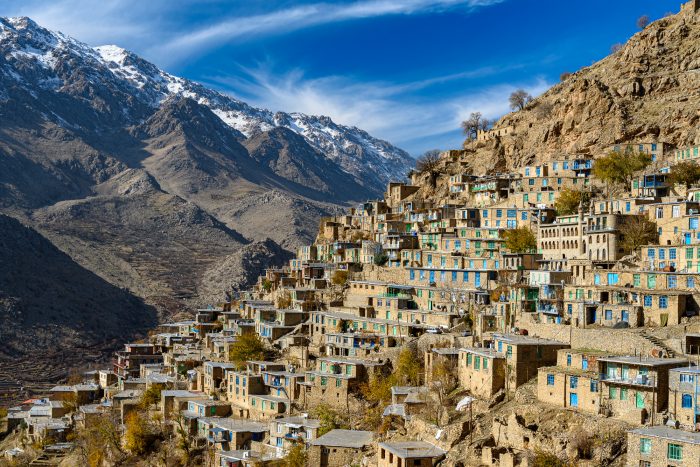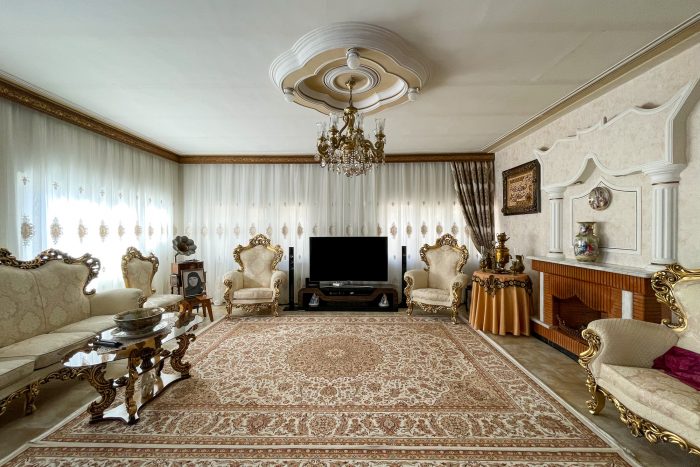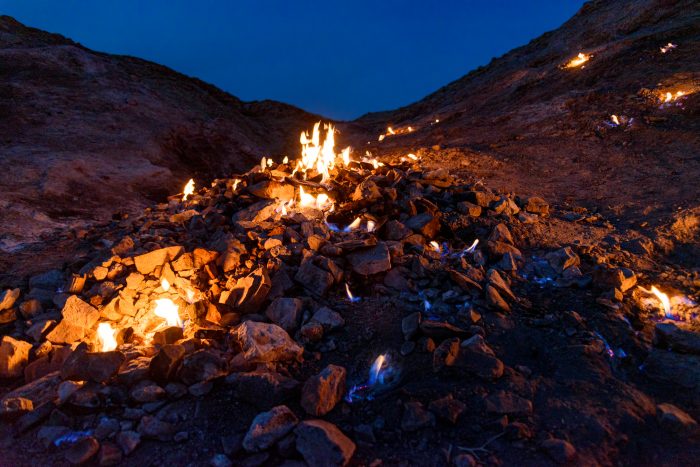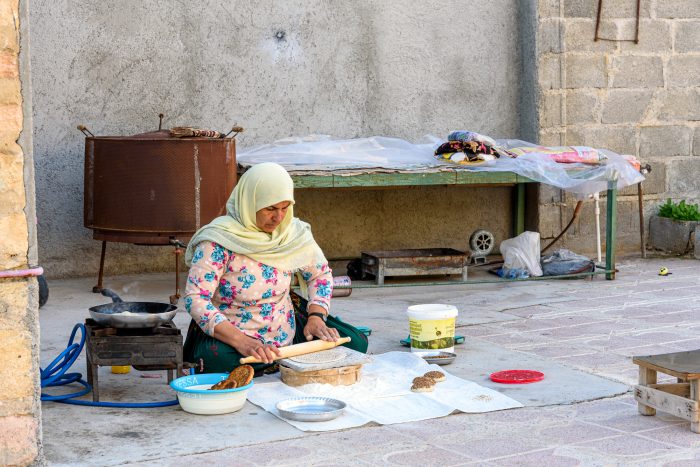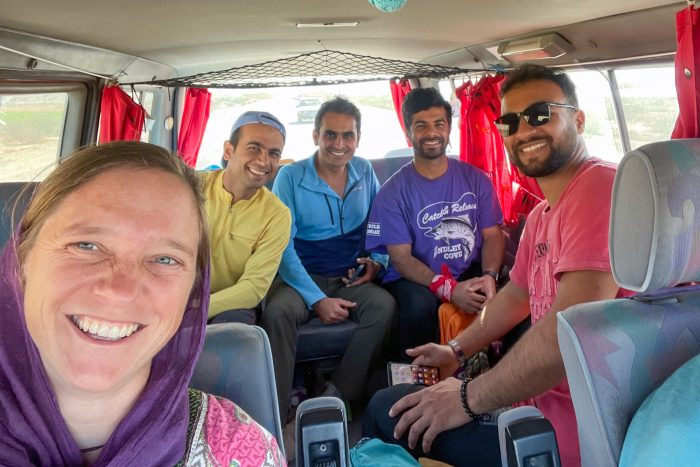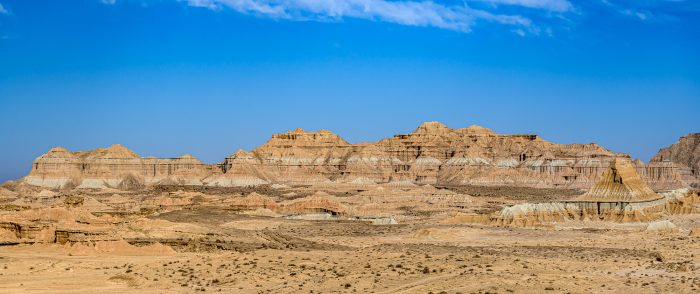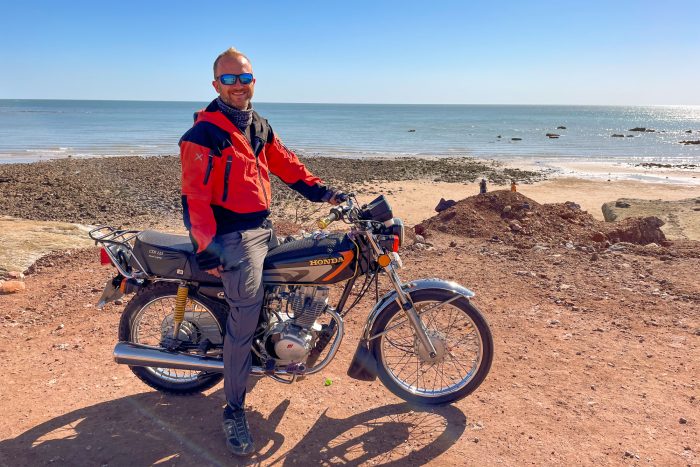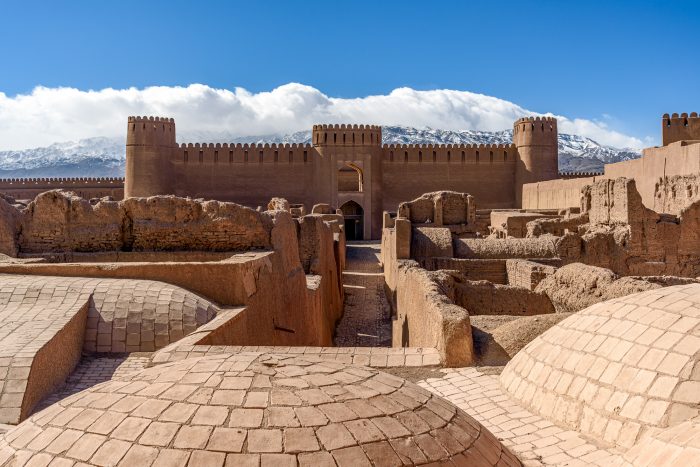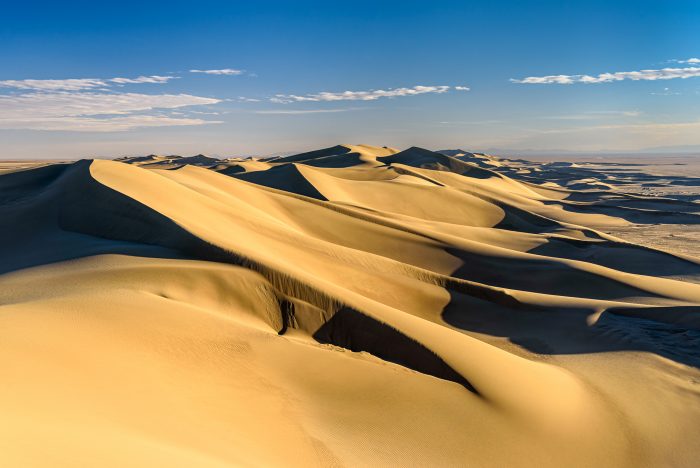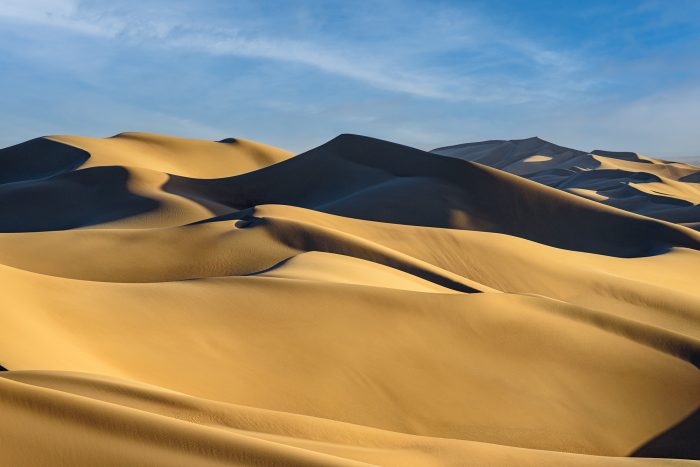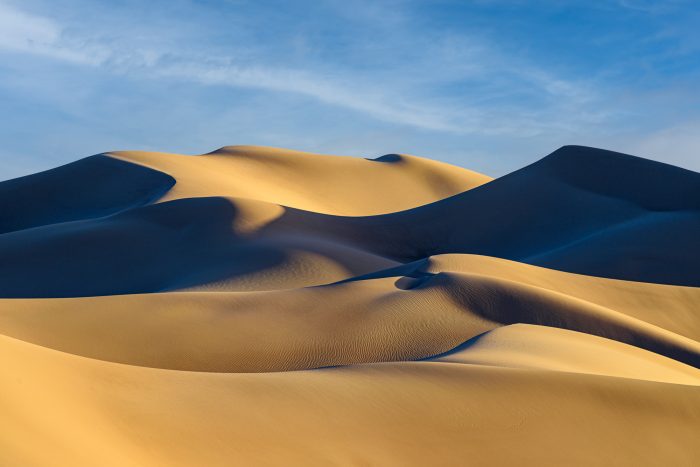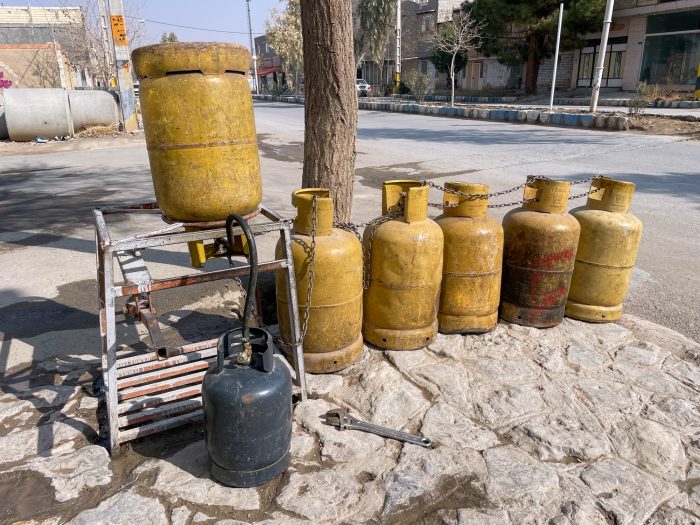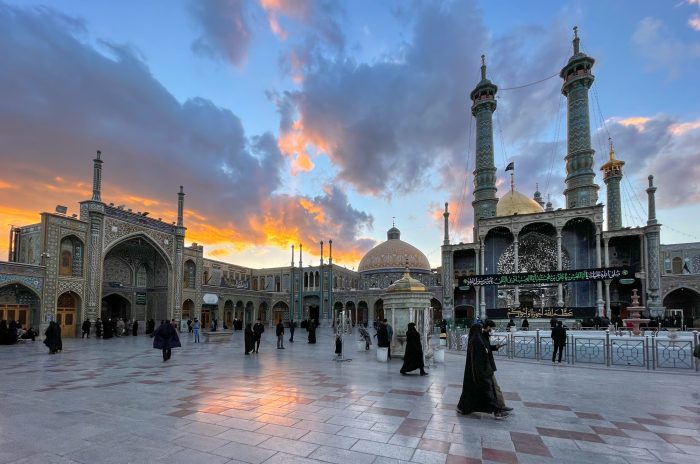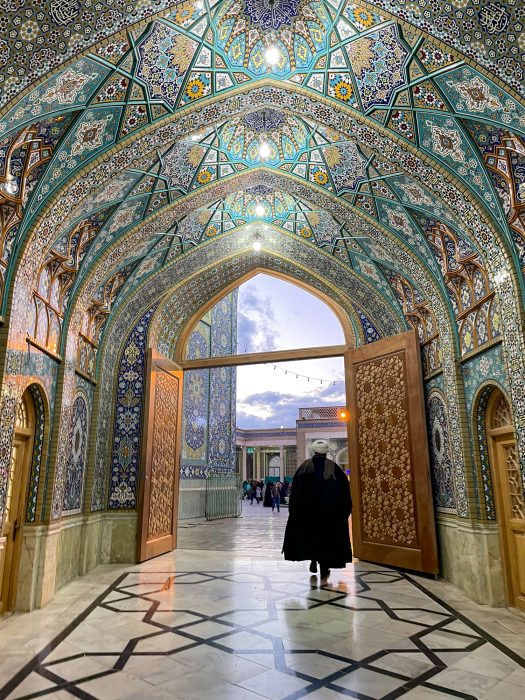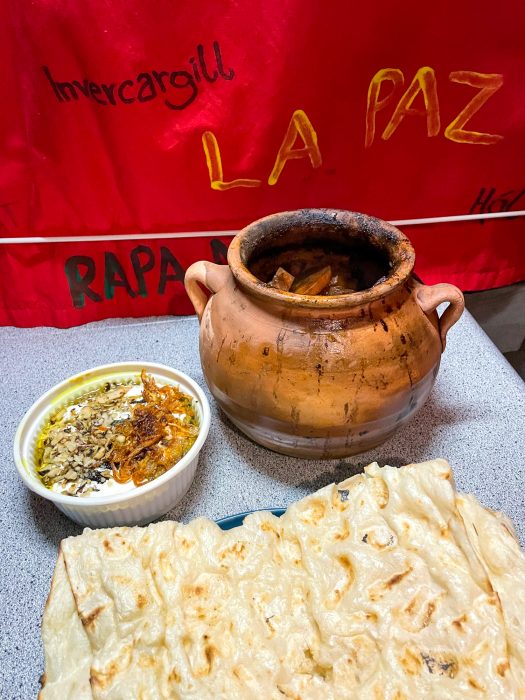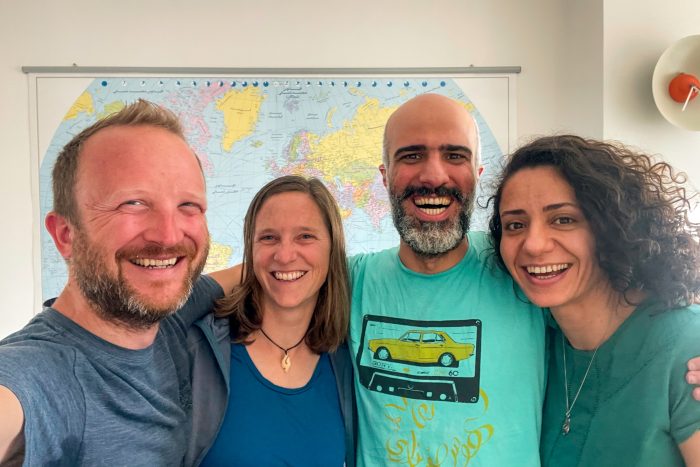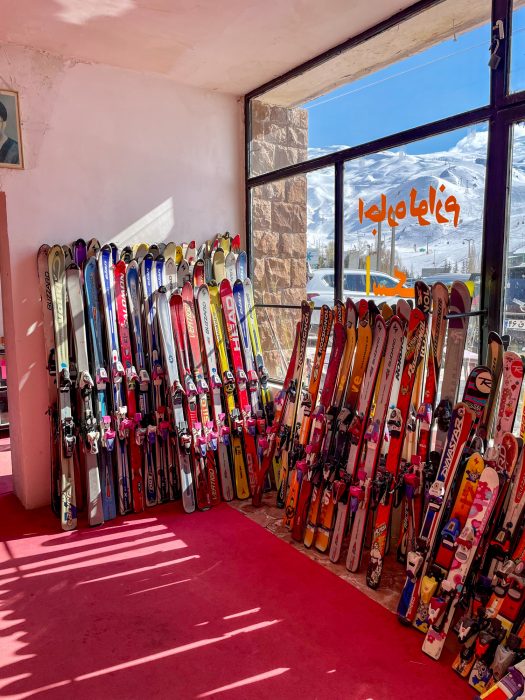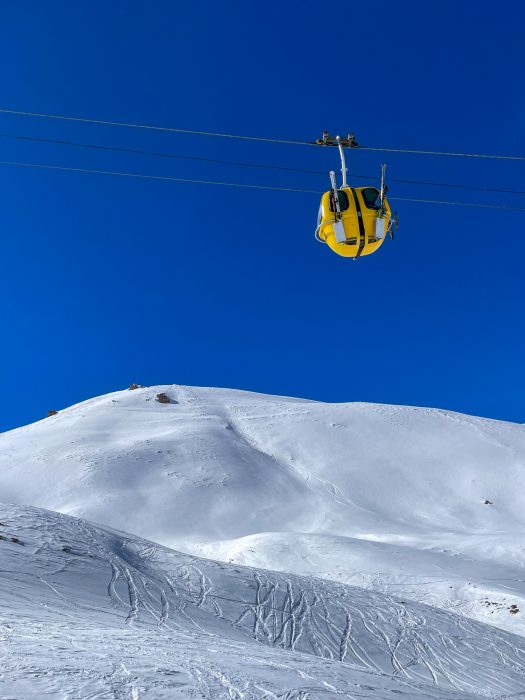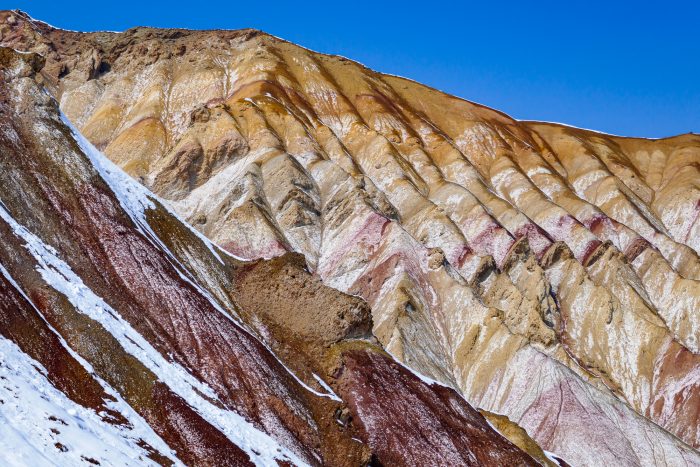We traveled to Iran for a second time, and we were really looking forward to it. Last time we traveled by backpack and this time by car. One of our „fears“ of traveling Iran by car was that we would be too far away from the people. Spoiler alert: the contrary was the case… more on that later.
We entered Iran from Kurdistan-Iraq and therefore started our trip in the Kurdish part of Iran. We heard many wonderful things about the lush green landscape in Kurdistan in spring but because we were there in winter, we skipped most of it and tried to get south as quick as possible.

On our way to the south, we spent some wonderful days in Kermanshah with a lovely family. They invited us to their home and opened their heart to us and welcomed us with the legendary Iranian hospitality.
Continuing south (Iran is a very big country and we spent several days driving southwards…) we stopped at a place where natural gas emerges from the ground and burns constantly. The next day we were invited by a nomad family into their tent. It was a unique experience to see how very different their life is compared to ours…

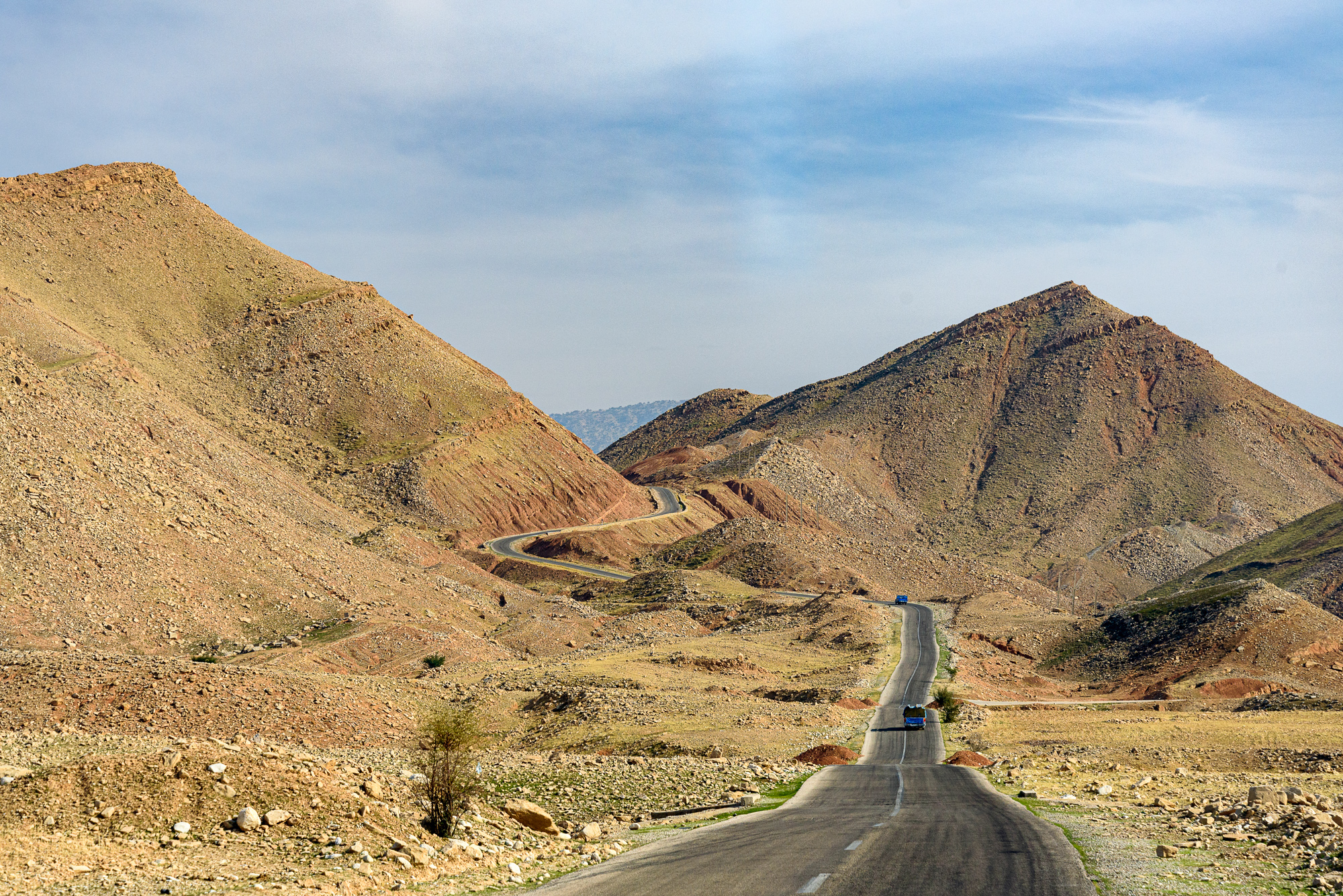
South of Bushehr we spent a whole week in a lovely homestay and did several day trips which finally also included some hiking again. Together with our lovely host Mohammed and his friends we explored the area around Anarestan, hiked along a canyon with a hot pool at the end and celebrated Yalda night with the big family of the homestay and their relatives.
One day we drove to the “Salt Dome” which was one of our highlights of Iran. We had a wonderful day and enjoyed the surreal and out of this world landscape!
The week at the homestay was like a holiday from travelling for us because we did not have to think about where to sleep, to shop food, to cook and we also enjoyed the advantage of a good shower after hikes 🙂


In Bandar Abbas we were able to extend our Iran Visa for another 2 months and afterwards we headed to Qeshm Island. We arrived there just one day before heavy rain hit this area. Our first days on the island were rather relaxing and waiting for the rain to pass and for the floods to go away. We were told that this was the first proper rain in 2 years! It was very special to experience the landscape after the rain – a very rare sight! On Qeshm we met the first other travelers in Iran. After such a long time it was once again wonderful to exchange stories and travel experiences. We spent some relaxing days on the beach of the Persian Gulf together before our ways parted again. On clear days we had the feeling we could see Dubai at the other side of the Gulf…


Next, we parked our van at the harbor and took a ferry to the (almost) car-free-island Hormuz. For 2 days we stayed in a homestay with our lovely Iranian-American host with whom we had long conversations and who gave us lots of insight into the Iranian culture. He also helped us organize a rental motorbike with which we explored the island. It was lots of fun riding the motorbike and we felt freedom. On Hormuz we had another highlight of our Iran trip: the rainbow cave was absolutely amazing and because it mesmerized us, we went there twice.
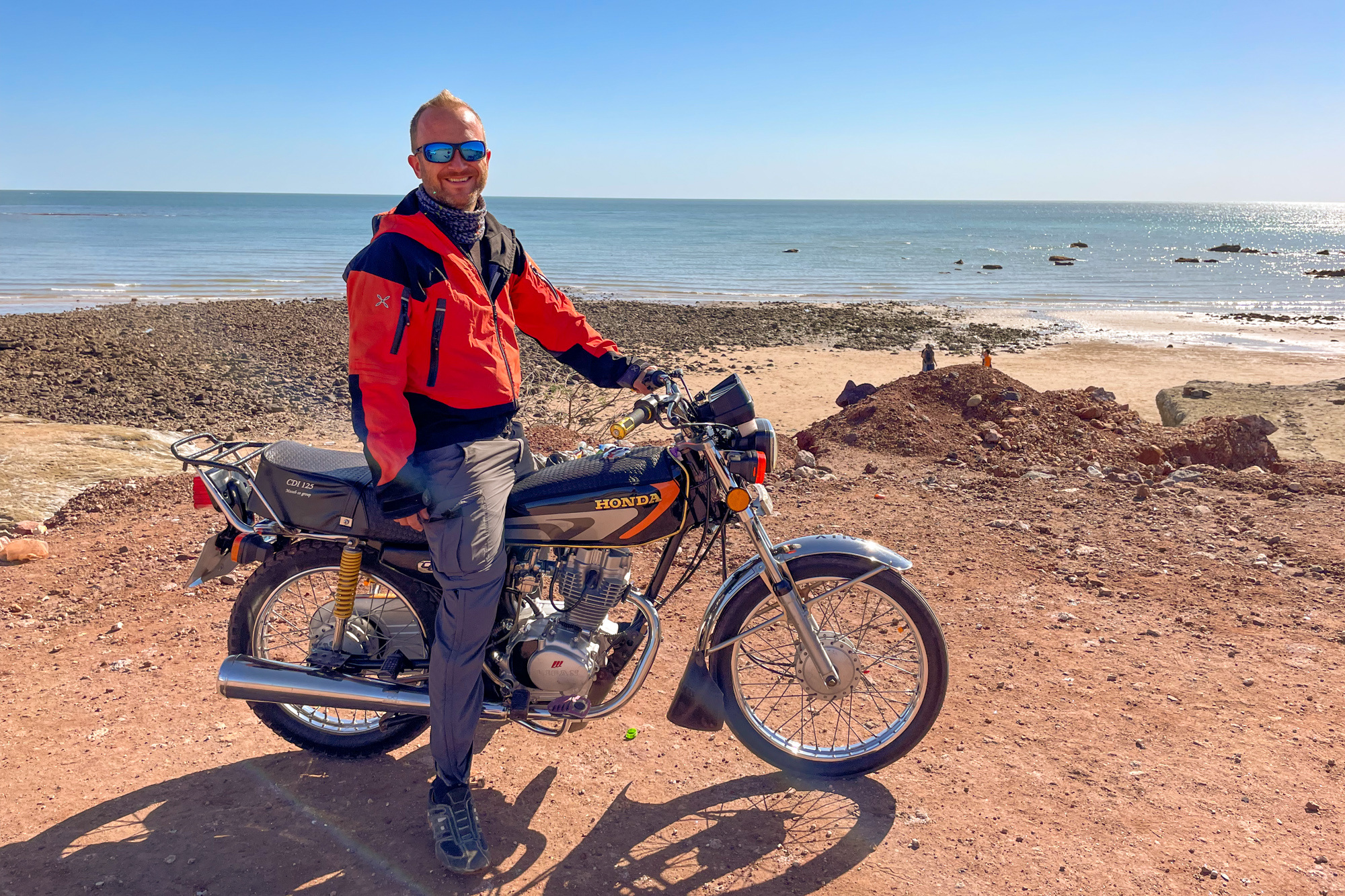

Qeshm was our turning point in Iran and as it turns out also of our entire trip. On the island we decided that it is time for our trip to come to an end and that we will be back in Tyrol at the beginning of May.
So slowly we started to travel northwards. The temperatures in the south were very pleasant and we knew that it would only get colder the further north we would get.
Our first stop northwards was the citadel of Bam. Iran often has earthquakes. In 2003 a devastating earthquake hit Bam and killed thousands of people and destroyed the city. We visited the reconstructed citadel. While we found it very impressive, we had the feeling that the restauration was done too “properly” or “clean” and because of that the building lost a bit of its charm.
Our next major stop was the Lut desert. First, we drove to the oasis “Keshit” where we explored the abandoned, old part of the town, which we liked a lot because it was very untouched and natural. Then a sandstorm hit the area. Everything was orange, the visibility was very low, and the air was full of… well… sand! We waited for a day until the sandstorm passed.
To get a bit deeper into the Lut desert you really need a 4×4. For one day we hired a guide with a 4×4 and drove into the beautiful landscape. The impressive Kaluts made us once again feel like we are on a different planet…


Further north we went to the Varzaneh desert with its sand dunes. We found a peaceful and calm overnight spot in between the sand dunes which was reachable with our car but not visible from the road. On Instagram we wrote with other travelers to meet at this spot, and they joined us there. With some of them we had been writing for months and it was so nice to finally meet in person. We had long conversations, shared food, and enjoyed the quietness of the desert. Because it was so beautiful, we ended up staying for 6 nights.


On our last visit to Iran 8 years ago we made many friends and with many of them we kept contact. We were very excited and happy to meet our friends in Karaj near Teheran again. They invited us to their newly built very modern and stylish house and we ended up staying for 6 days. We enjoyed very delicious Iranian food, met their friends, explored Karaj and each evening we tried to teach them the very complex German card game “Skat” – with success! But at some point, it was (sadly) time for us to move on…
We really wanted to experience skiing in Iran. One of the best places to do that is in the ski resort “Dizin” which is located north of Tehran at altitudes between 2600 and 3600m. We rented skis and enjoyed a wonderful day on the slopes with blue sky and sunshine. The lifts were old and very slow (compared to Austria), and people were queueing at the entrance. But as a result, the slopes were empty. We enjoyed the skiing a lot and the snow condition was also good. We are pretty sure it was all-natural snow.
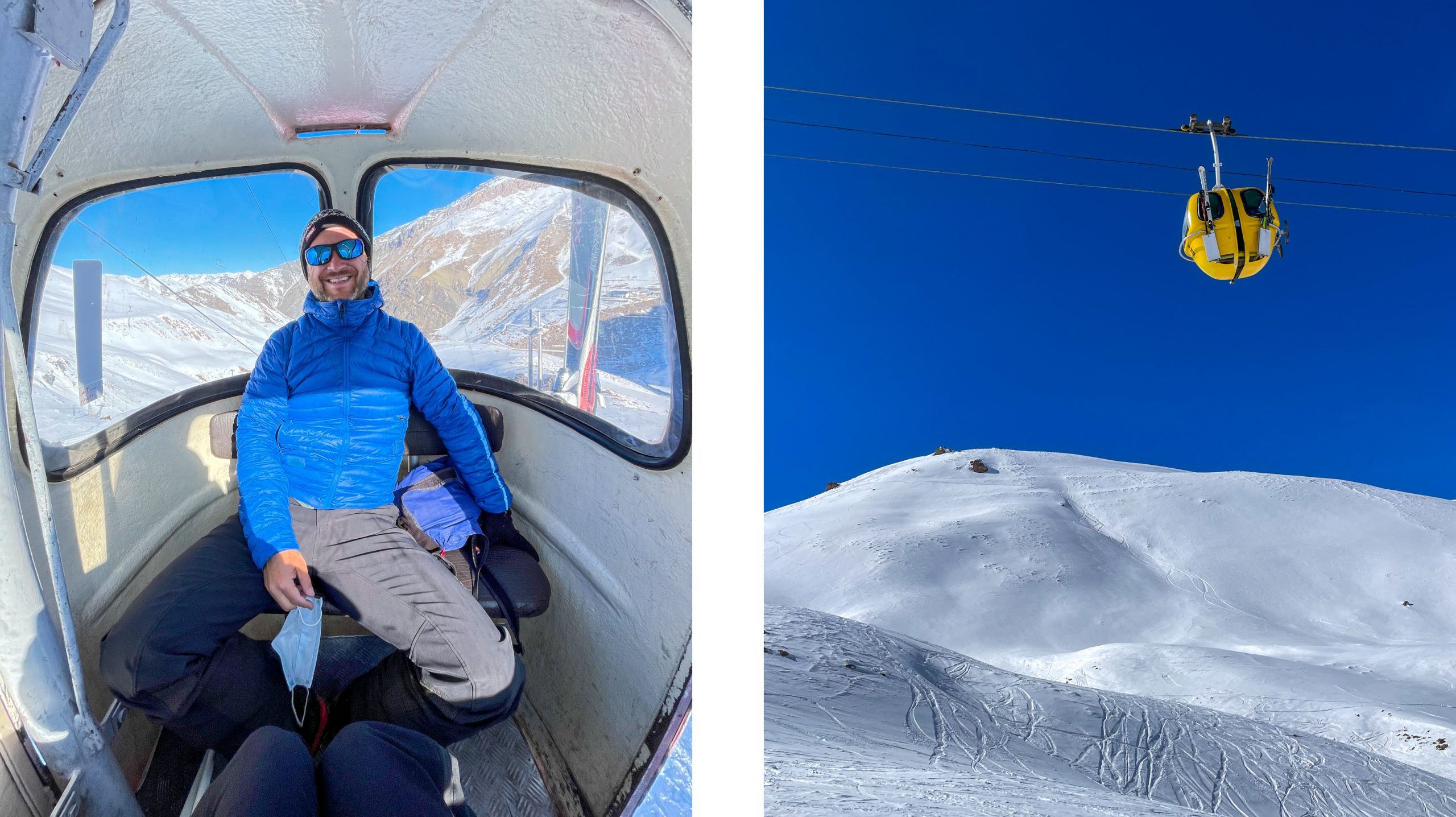
This was our last proper stop in Iran. Afterwards we just needed to drive a lot of kilometers towards the Turkish border.
We have many stories and anecdotes to tell about our time in Iran. And even though this time our visit was a bit more difficult (because of some points mentioned below) we still had a wonderful time in this beautiful country. As last time we were absolutely fascinated by the openness towards strangers and how they open their heart for you. We will definitely try to adopt some of these attitudes!
NOTES & ANECDOTES
When we crossed the border between Iraq and Iran the very first thing that we saw was an Omnibus from to „Auderer“ bus company from Imst!! (this bus was sold to another country and did not carry passengers from Imst)
Until now we somehow never considered the Iranian food as very good. This really changed on this trip. We ate so much delicious food with a lot of variety.
In Iran 95% of all cars are white. Additionally, our car does not exist in Iran. Because of this we were detected as tourists after 0.1 seconds.
our comfort speed is 75kmh. Especially in Iran we often wished that we could drive 110kmh comfortably (without our ears falling off) to better cover the vast distances.
in Iran refilling fuel is only possible with a “fuel card”. You can’t get one as a tourist. So we always had to ask truck drivers if we could use their card for refilling. Afterwards we gave them the money.
the Lut desert is twice as big as Austria!
In Iran almost everybody knows Angela Merkel. She is very popular. A sad thing is that when you say from Germany many (old) people will also want to talk about Hitler…
In Farsi language they don’t write vowels (a, e, i, o, u). Which is very illogical to us. This led to two things:
1) automatic (machine) translations of towns make absolutely no sense
2) if Iranians don’t know for example a town name there is no proper way to know if the town is called “Keshit”, “Kushat”, “Koshit” or else
Iran is an almost cash-free-society. Everyone pays everything with an Iranian credit card (of course not Visa or Mastercard because of the sanctions). Even the smallest street vendor has a terminal for cards. That’s sometimes difficult for travelers who like to carry cash. If you must pay a fee at for example an authority, they will not accept cash. As a tourist you can either get a “Tourist-cash-card” or ask a local to pay with his card and give him the cash afterwards.
We met a married couple who went swimming together for the first time in Thailand after being married for 12 years. In Iran public pools are always gender separated.
two smiling Policemen honked and waved at us from their police car while driving. At the nearby checkpoint they stopped us. But not because we had done something wrong but because the wanted to talk to us (with Google Translate). In the end they even offered us their takeaway lunch!
A teacher told us that her monthly income is the equivalent of 115 Euro
The inflation is bad and massive. In 2014 we got 3000 Toman for 1 Euro, this time we got 30000 Toman for 1 Euro.
We have a suggestion to make Iranian cars cheaper 🙂
build them without mirrors and without direction indicators – the majority doesn’t use them anyway… We also saw some people driving with a neck brace (German: Halskrause) but that’s no problem: the majority does not look back anyway only frontwards…
The light is only turned on when it’s really dark. Also, many people convert their lights so that they flash in different colors – the priority is definitely on the looks and not the function…
We are aware that the following points do not count for every Iranian; still this is what our impression was in general:
Iranians are afraid of the dark and about being alone. They are also scared of foxes and wolves.
Iranians are very impatient and do not know how to queue.
Sometimes we had the feeling that our own will does not count; our will was often overruled by Iranians. That’s something a European is not used to.
Some friends invented the term of „friendly hostage“ and we think that this term is really fitting. They are SO incredibly guest friendly that sometimes it is just too much…
If privacy is important to you then you should probably not go to Iran. There will be countless pictures taken of you or your car and they end up on the Internet without you being asked.
We really struggled to wild camp in Iran mainly because of the above-mentioned reasons. Even if only one person sees you parking somewhere in the wild that could be enough that he will not let you stay there for the night. Either he will talk you into coming to his house or they will inform the mayor or the police. The police will come and tell you that this place is not safe (probably because it’s too lonely). They will then escort you to a very brightly lit public park in the middle of the city center which they consider as safe – one of the last places we would choose voluntarily to spend the night.
Because we find it annoying having to move to a new place in the night we mostly stopped trying to wild camp. We spent many nights at public parking lots or at picnic areas where it was allowed. Of course, the availability of a toilet was a problem for us. Especially in winter many public toilets were closed. But luckily Verena had her Pippilotta 😉
The Iranian daily rhythm is very different to ours. While traveling we wake up with the sun and go to bed 2 or 3 hours after sunset. For Iranians the day hardly starts before 10:30am and ends way after midnight… Every time we stayed with locals, we struggled with the rhythm afterwards.
In comparison to 2014:
We really liked the bread in 2014, especially the fresh Barbari. Unfortunately, the government now forces bakeries to reduce the amount of salt in the bread so now it was very dull and often tasted like nothing.
While this already happened occasionally in 2014 it was much more pronounced in 2021: as soon as they realized we are Germans almost every young person asked us how they can emigrate to Germany. For the young people the situation in the country is really bad and many have lost hope 🙁
the number of car brands has drastically increased. Now there are many Chinese car companies – almost all of them are unknown to Europeans
the picture of Qasem Soleimani – who was assassinated by the US in Iraq – was displayed in many many places
NUMBERS
we spent 11 weeks in Iran
Exchange rate: on average we got 30.000 Toman for 1 Euro (January 2022)
we slept 22 nights on parking lots, 19 nights in homestays (partly inside partly in our car), 3 nights at families where we were invited, 2 times “friendly hostage”, 6 nights at friends from 2014 and only wild camped 24 times
diesel price was around 0,03€ (1000 Toman)
we drove approximately 7000 km in Iran
we spent 12 Euro per person per day. A huge part of our costs in Iran was for “secondary” costs like Visa, Carnet de Passage, currency exchange fees, PCR tests and others. The amount of all the secondary costs was 550 Euro.
The daily costs do not include fixed costs like car insurance + taxes and travel health insurance.
Visa: per person we paid 30 Euro for the Visa agency and 45 Euro to pick up our visa at the consulate in Erbil (Kurdistan-Iraq). The visa is valid for 1 month and you can extend it for another 2 months. We did our visa extension in Bandar Abbas and it was super fast, friendly and very cheap.
SIM card: Irancell. Mostly good 4G coverage. We paid approximately 2€ for 24GB. This price was only so cheap because we did not have a tourist SIM card but one from an Iranian
we went to a mechanic 2 times
road condition: ranging from 4 to 7 (out of 10 points). Even toll motorways are often bumpy patchwork. And like in other countries before the speed bumps were super annoying…
driving style / manners: impatient, bad drivers – especially in cities. The overland traffic is mostly relaxed.








